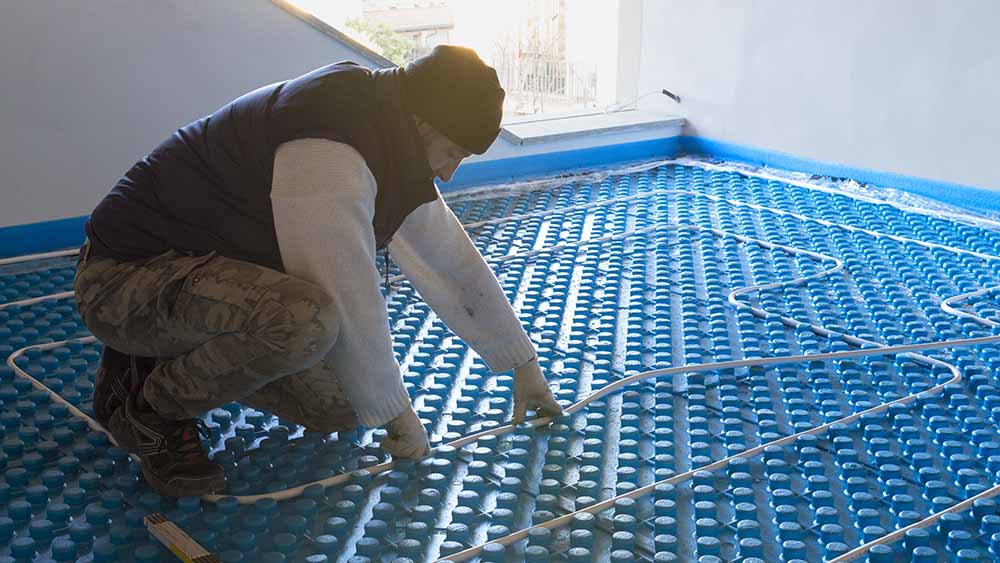Radiant Cooling: The Future of Energy-Efficient Comfort
Dec 4 2024
Written by: Delhi Chapter Ishrae

In the evolving world of building systems, radiant cooling is emerging as a revolutionary technology, offering a sustainable and energy-efficient alternative to conventional air conditioning. By leveraging the principles of thermal radiation, radiant cooling systems provide comfort with significantly lower energy consumption, making them ideal for modern buildings aiming for eco-friendly operations.
What Is Radiant Cooling?
Radiant cooling works by absorbing heat directly from the occupants and the surrounding surfaces. Unlike traditional HVAC systems that rely on air movement, radiant cooling systems use water as the medium for heat exchange. This is typically achieved by circulating cool water through pipes embedded in floors, ceilings, or walls. The cool surfaces absorb the heat radiated by occupants, equipment, and sunlight, creating a comfortable indoor environment.
Key Benefits of Radiant Cooling
Energy Efficiency
Enhanced Thermal Comfort
Quiet Operation
Improved Indoor Air Quality
Space Optimization
Water has a higher heat capacity than air, making radiant cooling systems significantly more energy-efficient. Studies show that they can reduce energy consumption by up to 30% compared to traditional air conditioning systems
Radiant systems maintain consistent temperatures across spaces, eliminating the cold spots and drafts often associated with forced-air systems. This creates a more natural and pleasant environment for occupants.
With no fans or compressors involved, radiant cooling systems operate silently, enhancing the overall experience in residential, commercial, and industrial settings.
Unlike traditional systems that circulate air (and often dust and allergens), radiant cooling reduces air movement, contributing to cleaner indoor environments
With pipes integrated into the building’s structure, radiant cooling systems free up valuable ceiling and wall space otherwise occupied by ducts and air vents.
Applications of Radiant Cooling in India
Given India's diverse climate and growing energy demands, radiant cooling has immense potential across various sectors:
- Commercial Buildings :
Office spaces can benefit from the system’s energy efficiency and uniform cooling, reducing operational costs and improving productivity.
- Educational Institutions :
Quiet operation makes radiant cooling ideal for schools, colleges, and libraries.
- Healthcare Facilities :
Hospitals can leverage radiant cooling to ensure a hygienic and quiet environment for patients.
- Residential Buildings :
High-end apartments and villas are increasingly adopting radiant cooling for its luxury appeal and comfort.
Challenges and the Way Forward
While radiant cooling is a game-changer, certain challenges need to be addressed for widespread adoption in India:
The installation cost is higher compared to traditional systems, though operational savings often offset this over time.
Radiant cooling performs best in dry climates. In humid regions, it may require dehumidification support.
Builders and consumers need greater awareness and technical expertise to integrate radiant systems effectively.
To overcome these hurdles, ISHRAE and the HVAC industry must work collaboratively to promote research, training, and policy advocacy for radiant cooling. Government incentives for green building technologies could further catalyze adoption.
Success Stories in India
Several landmark projects have already demonstrated the potential of radiant cooling. For instance, the Infosys campus in Hyderabad has adopted radiant cooling, reducing its energy consumption by over 30%. Similarly, Delhi Metro’s new stations are experimenting with radiant cooling, showcasing its scalability in infrastructure projects
Conclusion
Radiant cooling is not just a trend; it is a cornerstone of the future of HVAC systems. As India moves toward greener and more energy-efficient building practices, radiant cooling offers a sustainable solution to the growing demand for comfort and performance.
The Delhi Chapter of ISHRAE is committed to fostering innovation in the HVAC industry and supporting technologies like radiant cooling that align with India’s sustainability goals. Together, we can build a future where comfort and sustainability go hand in hand.